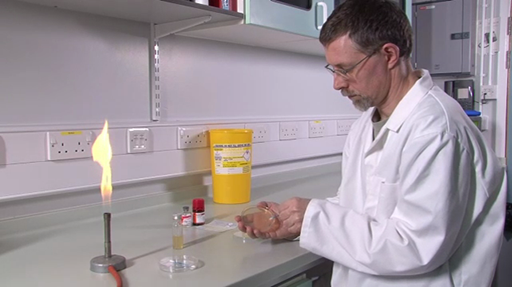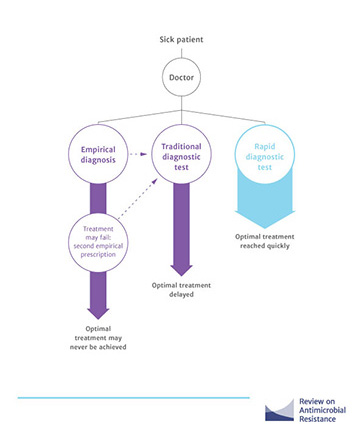4.1 Traditional approaches to infection diagnosis
Your family doctor often relies on
Why might an empirical diagnosis lead to unnecessary antibiotics being prescribed?
Empirical diagnoses rely on symptoms to diagnose an infection. For example, a persistent cough and fever could be symptoms of a chest infection. However, infections can be bacterial, viral or fungal and an empirical diagnosis cannot determine the cause of the infection. Antibiotics will not treat infections caused by viruses or fungi, therefore a prescription for antibiotics would be unnecessary in these cases.
In many cases a family doctor will send a sample of the infection for laboratory diagnostic testing. In the next activity, you reflect on your personal experience of being treated for an infection.
Activity 5 Being prescribed antibiotics
Think about a time when you, or someone you know, was prescribed antibiotics. Then answer the questions below, based on your experience.
- Did the doctor send a sample for testing?
- How long did you have to wait for the results?
Discussion
If your family doctor suspects that you have a bacterial infection, they will often send samples for traditional laboratory diagnostic tests. However, as you will see below, it can take up to a week to get the results of these tests. Meanwhile, you might be prescribed broad-spectrum antibiotics to try to treat the infection and prevent it from becoming worse.
Traditional laboratory diagnostic tests rely on culturing the bacteria for at least 36 hours to determine the type of infection and the drugs that it is susceptible to (see Video 4). This can delay the prescription of narrow-spectrum antibiotics that specifically target the infection.

While the results of a traditional laboratory diagnostic test are being processed, broad-spectrum antibiotics are often prescribed to try to treat the infection before diagnosis. In some cases, the treatment will be effective. However, if the infection is not caused by pathogenic bacteria, or if the infection-causing bacteria are resistant to the prescribed antibiotic, another prescription may be required.
Rapid diagnostic tests do not rely on culturing bacteria so they can reduce the time taken to diagnose the infection (Figure 10). This means that doctors can quickly prescribe a treatment that effectively and specifically targets the infection. This helps to reduce the unnecessary prescribing of broad-spectrum antibiotics.

In the next section, you will look at rapid diagnostic tests for infection more closely.
